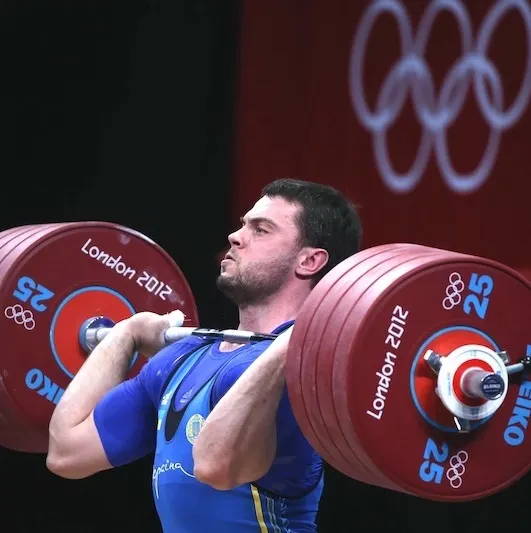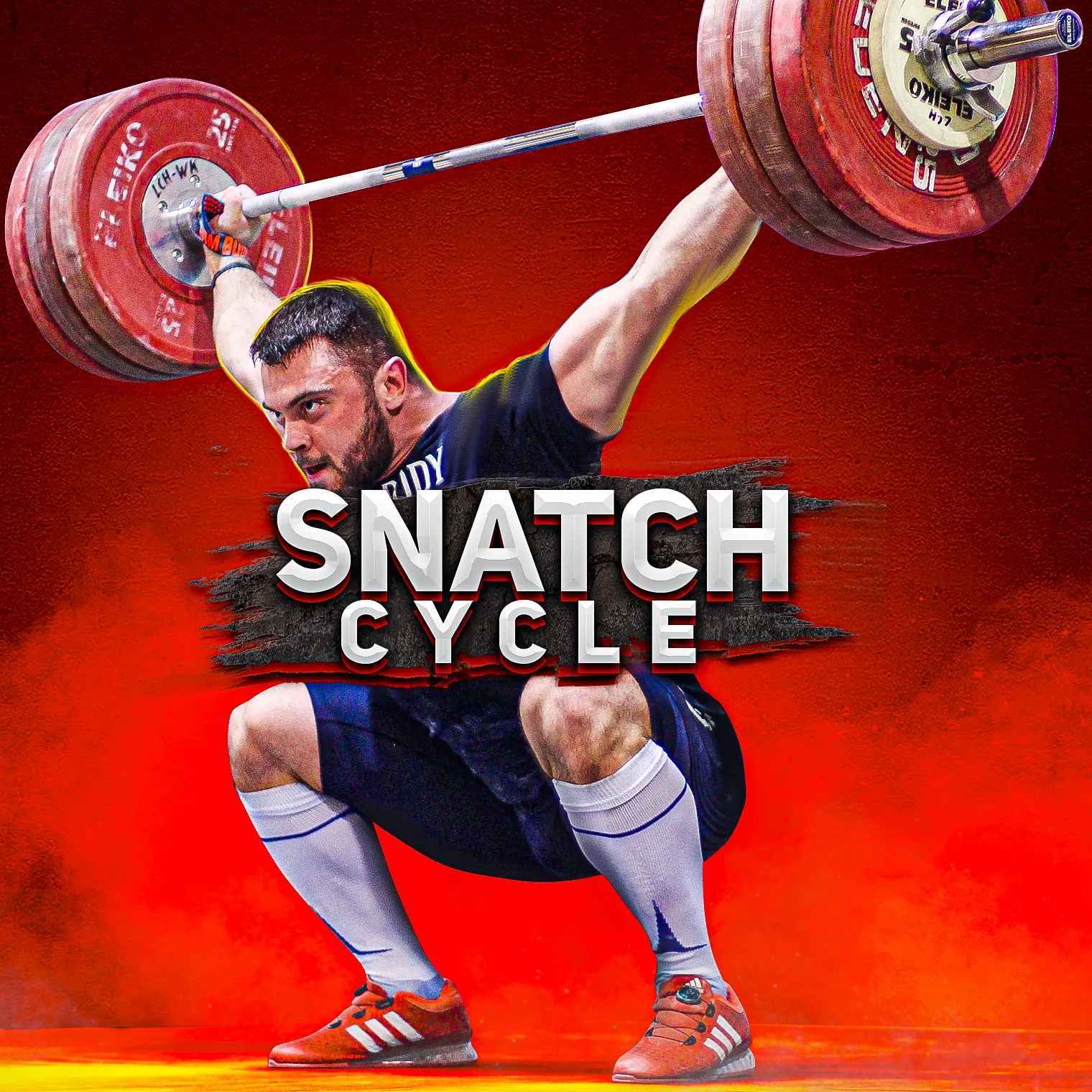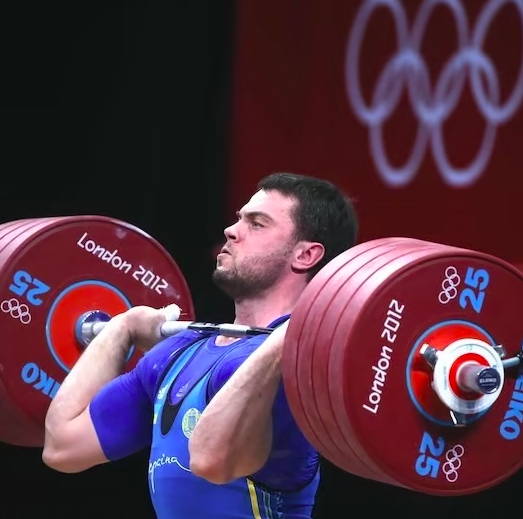As an Olympic weightlifter, you have a toolbox of different exercises that can be used to improve your main competition lifts. These include different Olympic movements or exercise variations that focus on specific technique elements.
Two popular snatch variations that are commonly performed are the muscle snatch and power snatch. Both help to increase pulling power and full body strength but are utilized in different ways.
In this article, we’ve compared the muscle snatch vs power snatch vs snatch. Once you’ve finished reading, you’ll have no problem knowing if to perform the power snatch or muscle snatch in your training.
Muscle snatch vs power snatch vs snatch – The muscle snatch and power snatch are common snatch variations. The main difference between the muscle snatch vs power snatch relates to the catch position. In short – in the Power Snatch, you drop to a partial squat. In the Muscle Snatch you receive the bar when standing.
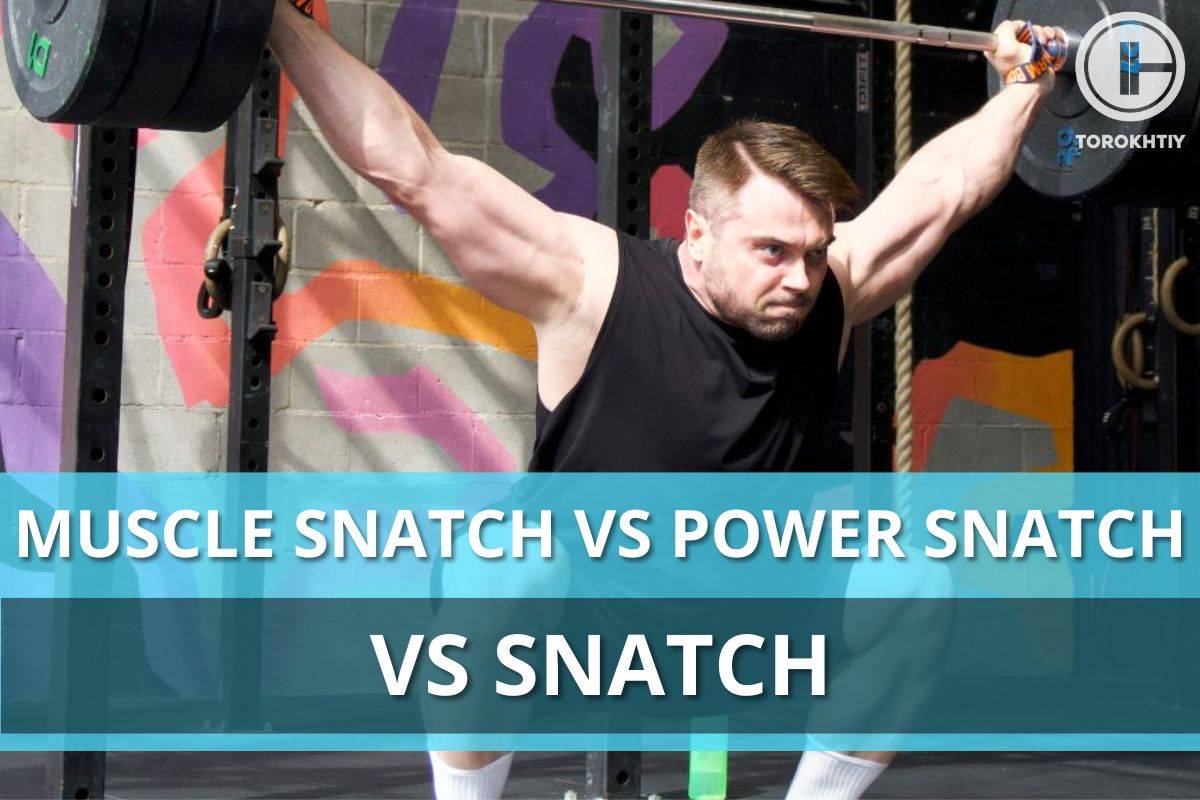
Snatch Variations And Why You Should Do Them?
The snatch is an official Olympic weightlifting exercise. In Olympic weightlifting competitions, it’s performed alongside the clean-and-jerk as a way for athletes to test their power and strength.
Whilst the snatch looks simple enough, the intricate technique elements make it a challenging exercise even for the most experienced athletes. Simply put, it involves lifting a weighted barbell from the ground to an overhead position in one fluid motion.
To perform the snatch correctly, athletes need good mobility, strength, and technique. At an elite level, this becomes vital when looking to lift heavier weights overhead. To perfect the different technique elements involved, we can break it down into different components.
Snatch variations, such as the muscle snatch and power snatch, allow us to focus on the different technique elements. When performed correctly, can improve performance in the normal snatch, making them an important element of a well-organized lifting program.
Before we look at the variations in more detail, let’s first take a look at how to perform the normal snatch correctly.
Snatch
How to perform the conventional snatch:
1. Starting Position
- Start with a snatch-width grip. With this, your hands should be wide enough so that the bar contacts your body at the crease of your hips when standing tall. This should happen when the bar is at arm’s length.
- Set a tight starting position. Your feet should be approximately hip-width apart with your toes bit turned out. Evenly distribute your weight across both of your feet. Ensure the bar is over the balls of your feet with your knees pushed out to the sides. Your knees should be inside your arms
- Next, make sure your trunk is braced forcefully with your back extended. Your shoulders should be over the bar with your arms in a straight, relaxed position. Ensure your head and eyes are facing forward before initiating the first pull.
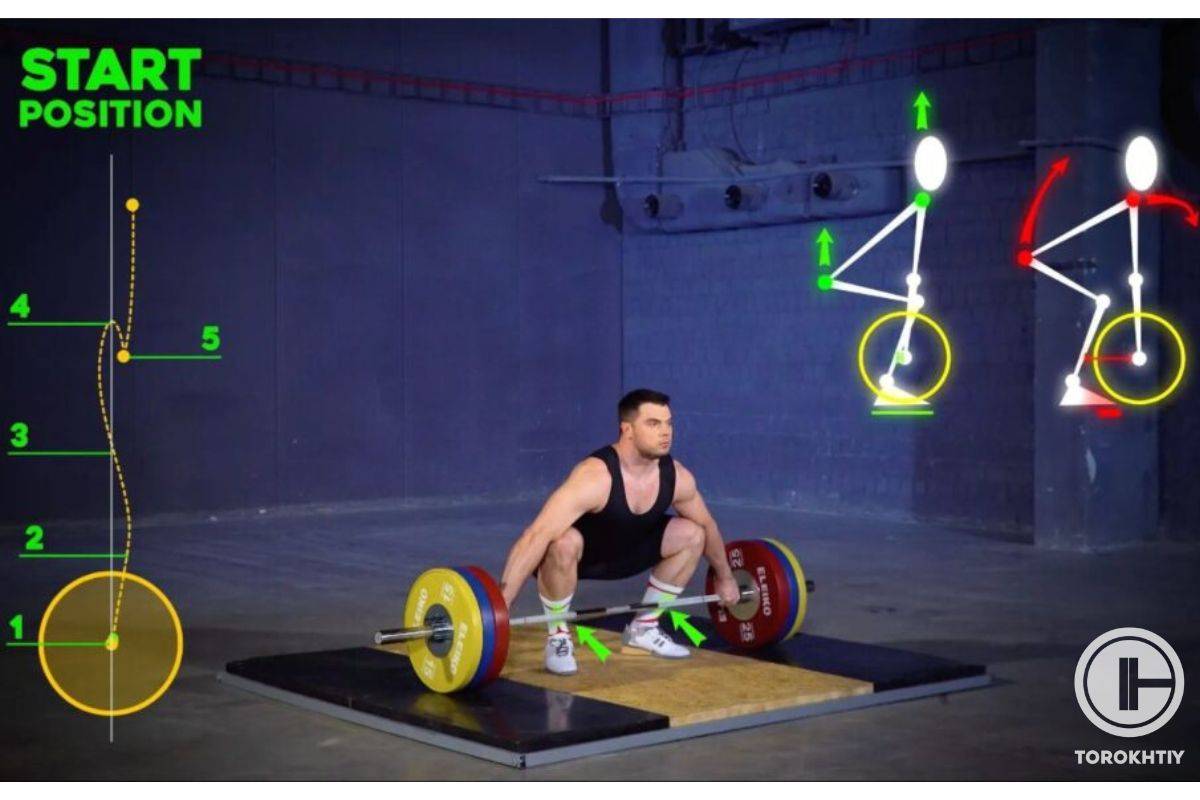
2. First Pull
- From the starting position, push your legs against the floor through both your feet. This should be similar to how you would do this during a squat.
- Maintain the same back angle as your starting position until the bar is approximately above your knee.
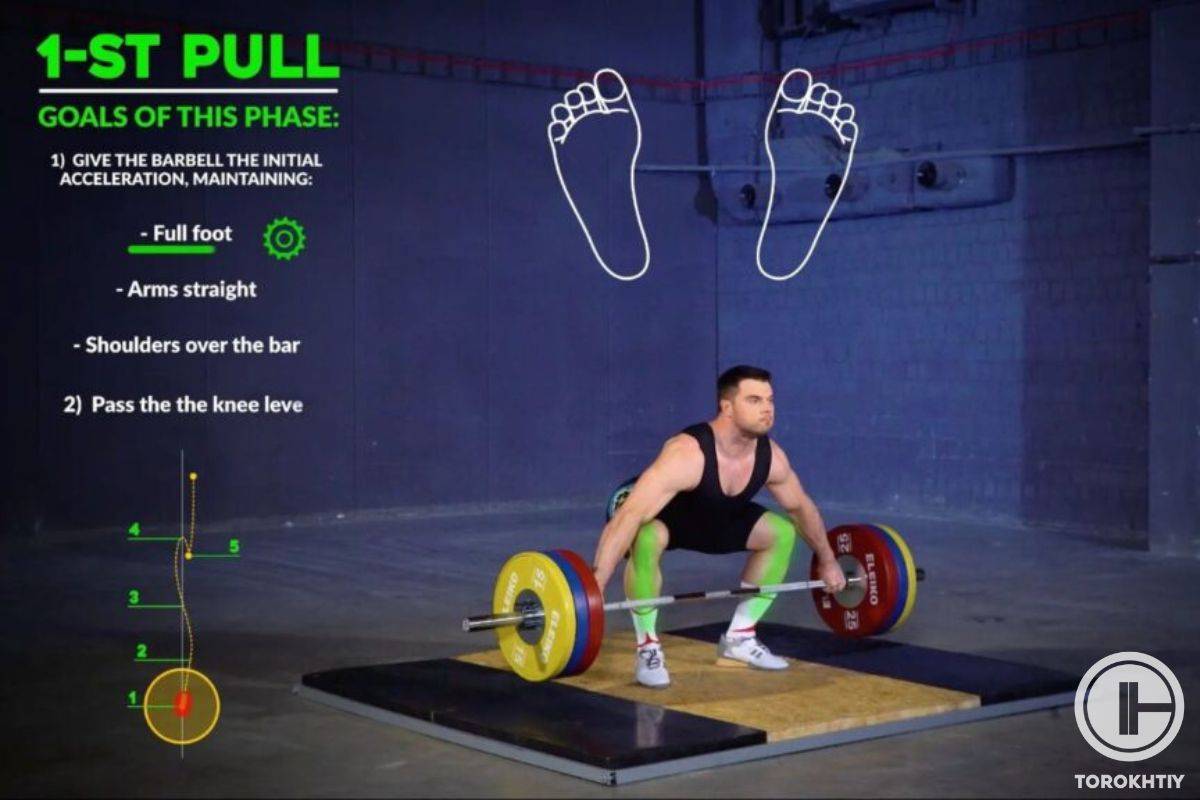
3. Second Pull and Power Position
- As the bar comes past your knees, continue aggressively pushing against the floor with both feet.
- At the same time, aggressively extend your hips while keeping the bar as close to your body as possible. Ensure the bar maintains full hip contact throughout this phase.
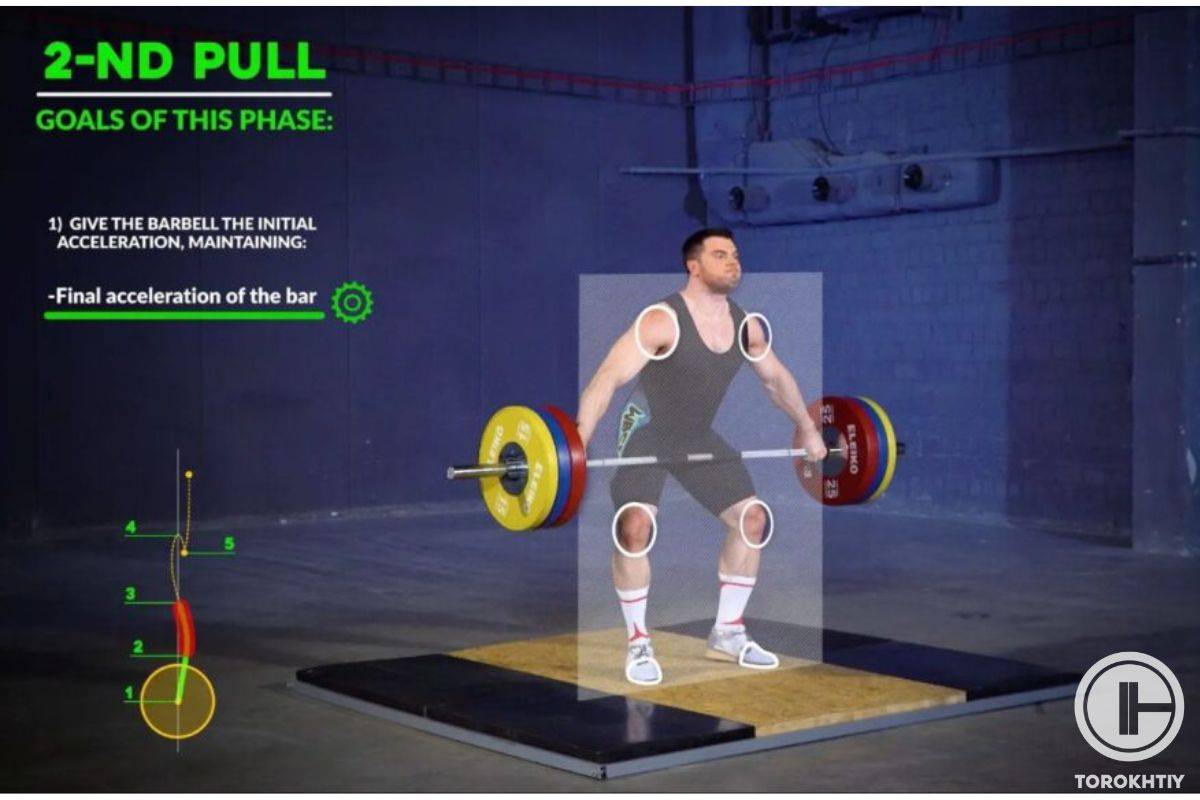
4. Turnover and Catch
- Fully extend your lower body. This is to maximally accelerate the bar as you bring it up. Pull your elbows up and out. Move your body down really fast to get to the catch phase.
- As you squat under the bar, lift both feet and place them into a receiving stance.
- Continue to bring the bar into the overhead position, forcefully fixing it into place by extending your arms.
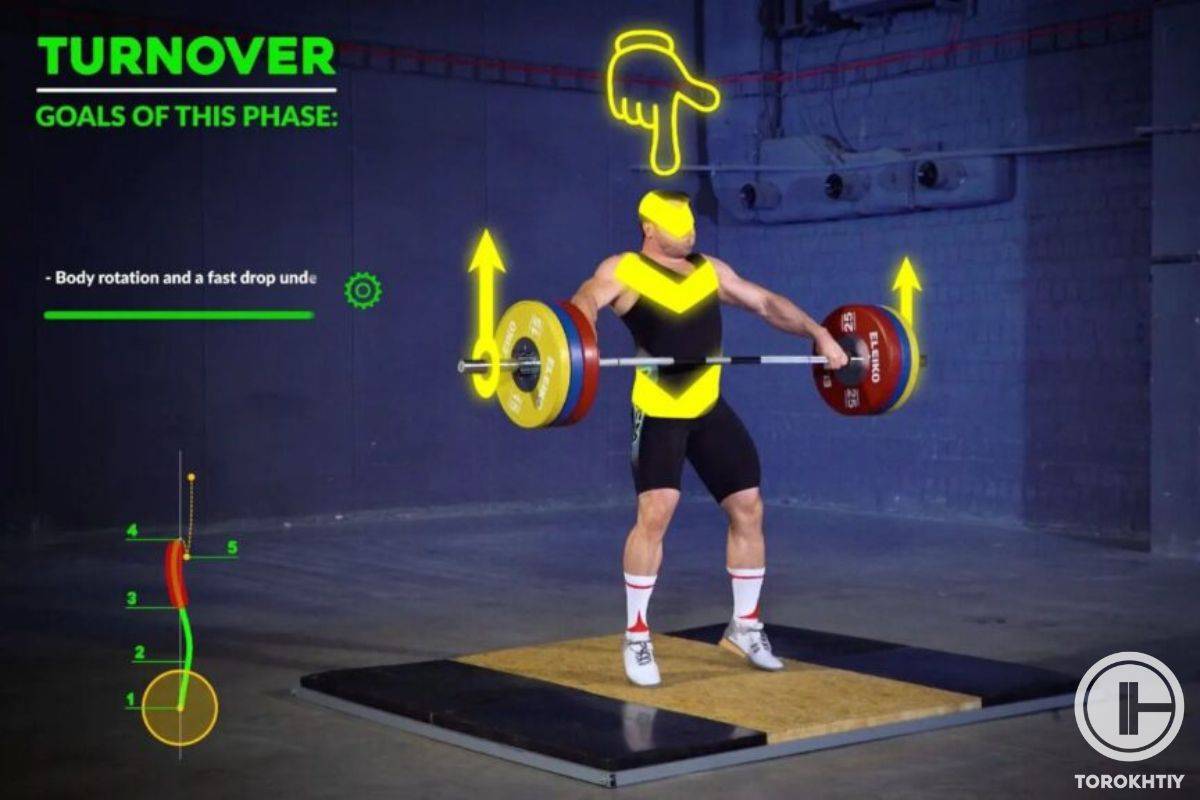
5. Recovery
- Once the bar is stable and secure overhead, completely stand up with your arms still extended.
- Following this, return it to the floor.

5 Benefits of the Conventional Snatch
Helps to reinforce the correct bar path when lifting.
Emphasizes a correct high elbow position.
Develops arm strength needed for the normal snatch
Improves the fundamental movements.
Less technique demanding than Power Snatch or Snatch – shorter learning curve.
Muscle Snatch
Muscle Snatch is a Snatch variation that mostly uses raw strength and power, and is less demanding in terms of technique. There is no drop during turnover and after a second pull instead of dropping under the bar, you rotate your arms and press the bar overhead. Muscle Snatch, because of how it should be done, won’t allow you to lift as heavy as Power or regular Snatch.
When performing the muscle snatch, the general goal is to lift the bar up and press overhead in one fluid motion, without dropping under the bar.
How to perform the muscle snatch:
1. Starting Position
- Set the same starting position as the normal snatch. Push both legs against the floor, similar to a back squat. Ensure you maintain the same back angle until the bar is above your knees.
- Get a snatch-width grip. Your hands should be wide enough so the bar contacts hip crease when you stand tall. This should be the case when the bar is at arm’s length.
- Set the same tight starting position as the snatch. Ensure your feet are hip-width apart with your toes slightly turned out. Make sure your weight is evenly distributed across your body.
- Next, make sure the bar is over the balls of your feet, Your knees need to be pushed out to the sides but still inside your arms.
- Forcefully brace your trunk and keep your back extended. Ensure your shoulders are over the bar in a relaxed and straight position. Your head and eyes should be facing straight forward.
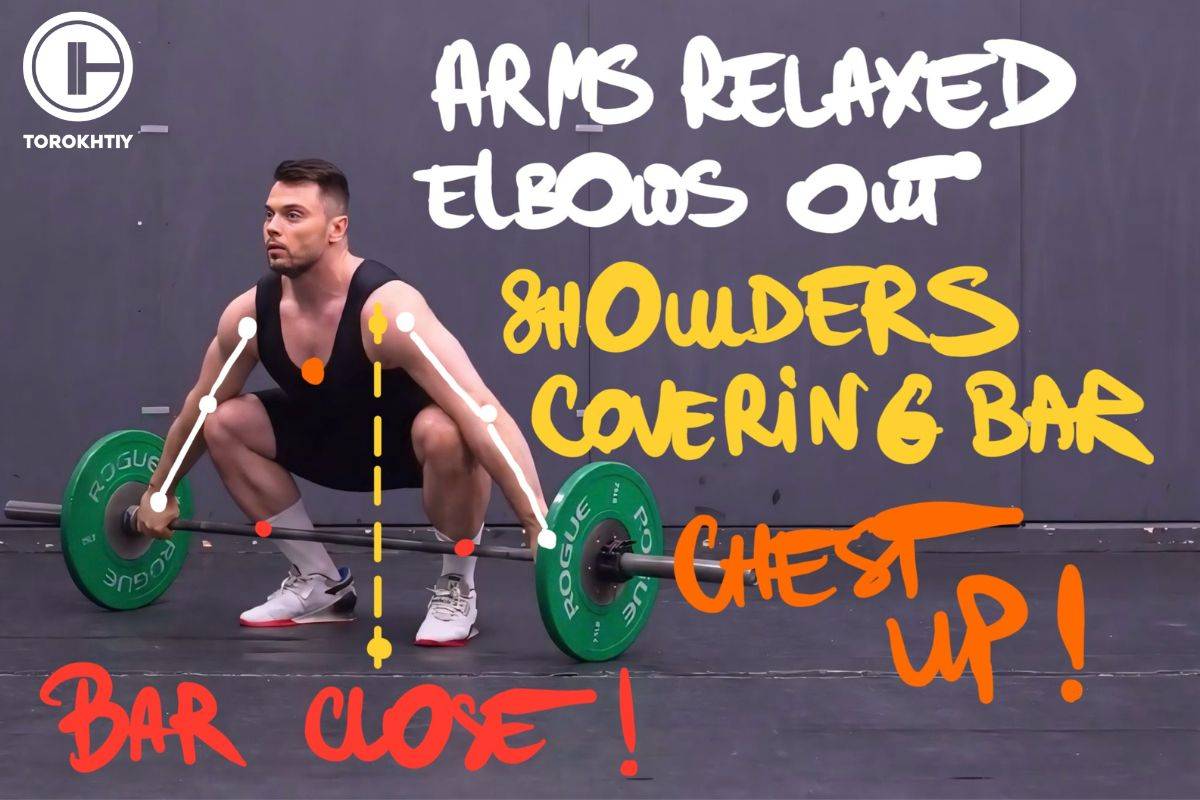
2. First Pull
- From the starting position, continue to push against the floor using both of your feet.
- Maintain the same approximate back angle until the bar comes above your knees.
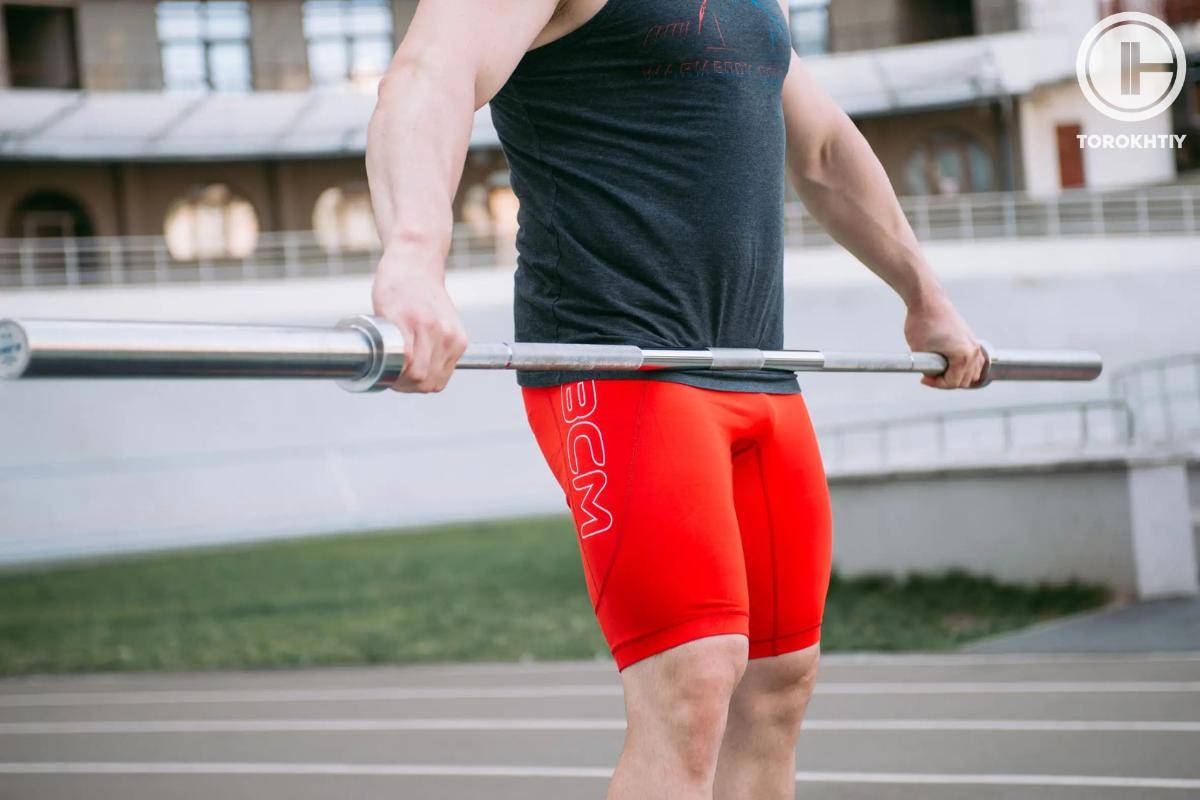
3. Second Pull and Power Position
- As the bar comes past your knees, continue to aggressively push against the floor with both feet. Extend your hips at the same time, keeping the bar as close to your body as possible. Ensure you maintain full bar contact with your hips.
- Keep your legs tight and push against the floor as you pull both elbows up and out. This is to maintain as much bar speed as possible.
- As your elbows come out and the bar rises, shrug the bar up at the top of the pull.
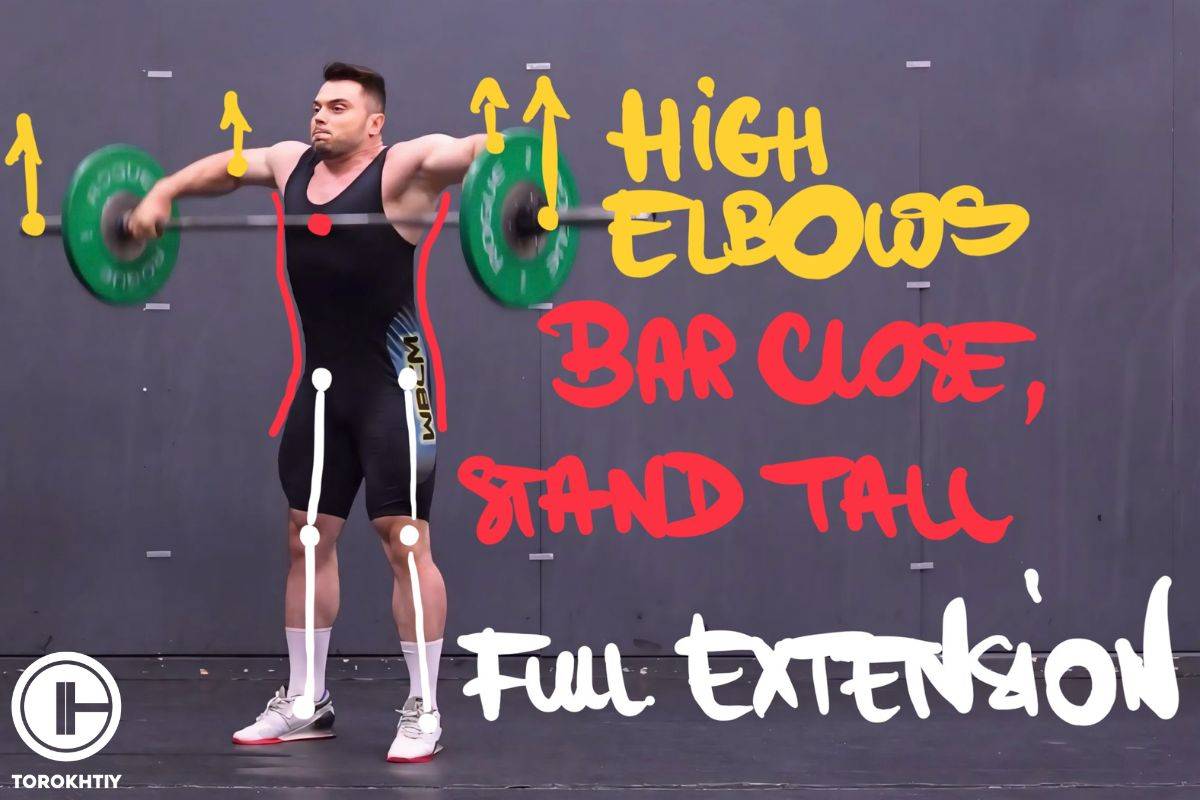
4. Turnover and Catch/Press
- Once your elbows reach shoulder height, turn the bar over by squeezing your shoulder blades back. This ensures that the bar stays as close to your body as possible.
- Rather than dropping your elbows, continue to actively pull so they remain at the same height.
- Finish the turnover by pressing the bar overhead. Punch up into the bar over the back of your neck. Your head should be pushed through both arms.
- Lock your arms forcefully and stabilize your body position before lowering.
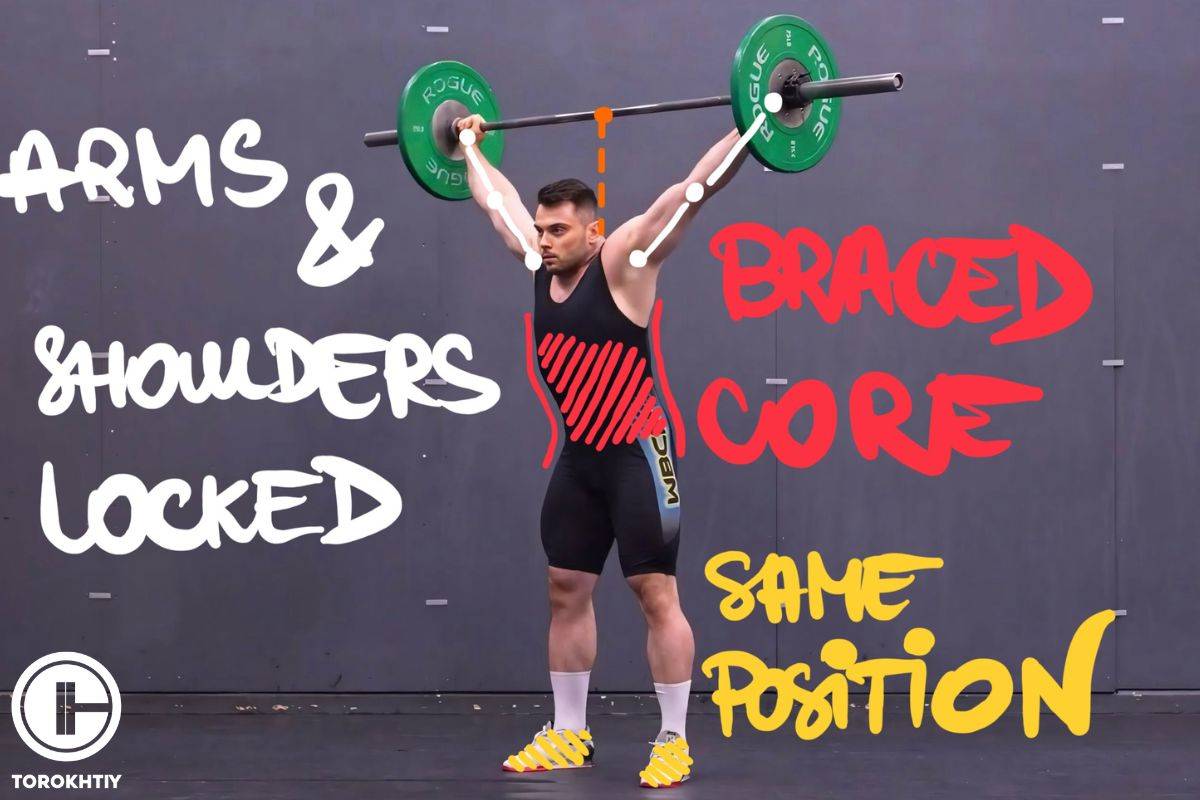
5 Benefits of the Muscle Snatch:
Helps to reinforce the correct bar path when lifting.
Emphasizes a correct high elbow position.
Develops arm strength needed for the normal snatch.
Improves the fundamental movements.
Less technique demanding than Power Snatch or Snatch – shorter learning curve.
Power Snatch
The power snatch focuses on the explosive elements of the normal snatch. But you don’t drop into full but only half Squat. By aggressively pulling yourself under the bar, it works on the explosive pulling elements.
The bar needs to go faster than it goes with regular Snatch because you need to catch the bar higher. That means in most cases power snatch won’t allow you to lift as heavy as regular Snatch.
When performing the power snatch, you start in the same position as a normal snatch but extend the pull and make hip contact with the bar. As the bar travels past your hips, you aggressively pull yourself under the bar while extending your arms overhead.
How to perform the power snatch:
1. Starting Position
- Start with a snatch-width grip. With this, your hands should be wide enough so that the bar contacts your body at the crease of your hips when standing tall. This should happen when the bar is at arm’s length.
- Set a tight starting position. Your feet should be approximately hip-width apart with your toes turned out. Evenly distribute your weight across both of your feet. Ensure the bar is over the balls of your feet with your knees pushed out to the sides. Your knees should be inside your arms
- Next, make sure your trunk is braced forcefully with your back extended. Your shoulders should be over the bar with your arms in a straight, relaxed position. Ensure your head and eyes are facing forward before initiating the first pull.
2. First Pull
- From the starting position, push your legs against the floor through both your feet. This should be similar to how you would do this during a squat.
- Maintain the same back angle as your starting position until the bar is approximately above your knee.
Tips From the Champ

Olympic Weightlifting Champion
3. Second Pull and Power Position
- As the bar comes past your knees, continue aggressively pushing against the floor with both feet.
- At the same time, extend your hips while keeping the bar as close to your body as possible. Ensure the bar maintains full hip contact throughout this phase.
4. Turnover and Catch
- Fully extend your lower body. This is to maximally accelerate the bar as you bring it up. Pull your elbows up and out. Begin moving your body down to start the catch phase.
- Because there is less drop, the bar must travel much higher compared to a normal snatch.
- Instead of performing a full squat, perform a half or partial squat to catch the bar.
- As you partially squat under the bar, lift both feet and place them into a receiving stance.
- Continue to bring the bar into the overhead position, forcefully fixing it into place by extending your arms.
5. Recovery
- Once the bar is stable and secure overhead, completely stand up with your arms still extended.
- Following this, return it to the floor.
Follow us!

FREE

FREE
Get a 2-week Weightlifting Program as a bonus for the subscription to kickstart your training plan!
5 Benefits of the Power Snatch:
Helps work on an aggressive pull when going under the bar.
Teaches you to complete the pull before going under the bar.
Develops the lifting speed needed during the normal snatch
Great tool for athletes who don’t have mobility for full snatch.
Great exercise for the rate of force development in all sports.
🔻5-week Snatch Training Program!
Develop your snatch with the Snatch Training Program!💪
🏋️♂️Achieve:
🔹Achieve new Snatch Records.
🔹Master Snatch variations.
🔹Enhance technique and strength.
🔹Targeted drills for Snatch perfection.
⚡Highlights:
🔹5 Days / Week
🔹Varied Snatch Lifts
🔹Focus on Strength & Technique
🔹Smart Warm-Ups.
Dominate your Snatch game NOW! 💥
Muscle Snatch vs Power Snatch vs Snatch
Each snatch variation can use the same technique for the first half of the lift – till power position. The second half of each lift is where the main differences occur. Let’s take a look at some of them in more detail.
1. Technique And Skill
For the first half of each lift, the technique elements can be identical for the three snatch variations. Once the bar reaches hip height, the differences are seen.
In the normal snatch, you drop into an overhead squat position as you fully extend your body. In the power snatch, you drop under the bar but to a half or partial squat instead. In the muscle snatch, you don’t drop at all, instead pulling the bar high up and then pressing overhead.
During the power snatch, the bar goes higher than in the regular snatch. Because of this, there’s no need for a deeper drop in the catch position. You receive the bar in a higher position because you can generate more force as you’re lifting less weight.
2. Difficulty
Each of the snatch variations requires different technique elements to be performed correctly. The snatch can be seen as more difficult as it requires more technique and mobility. Generally speaking though, the snatch is more difficult to perform.
The argument as to whether the snatch or power snatch is more difficult to perform largely depends on the technique elements you struggle with.
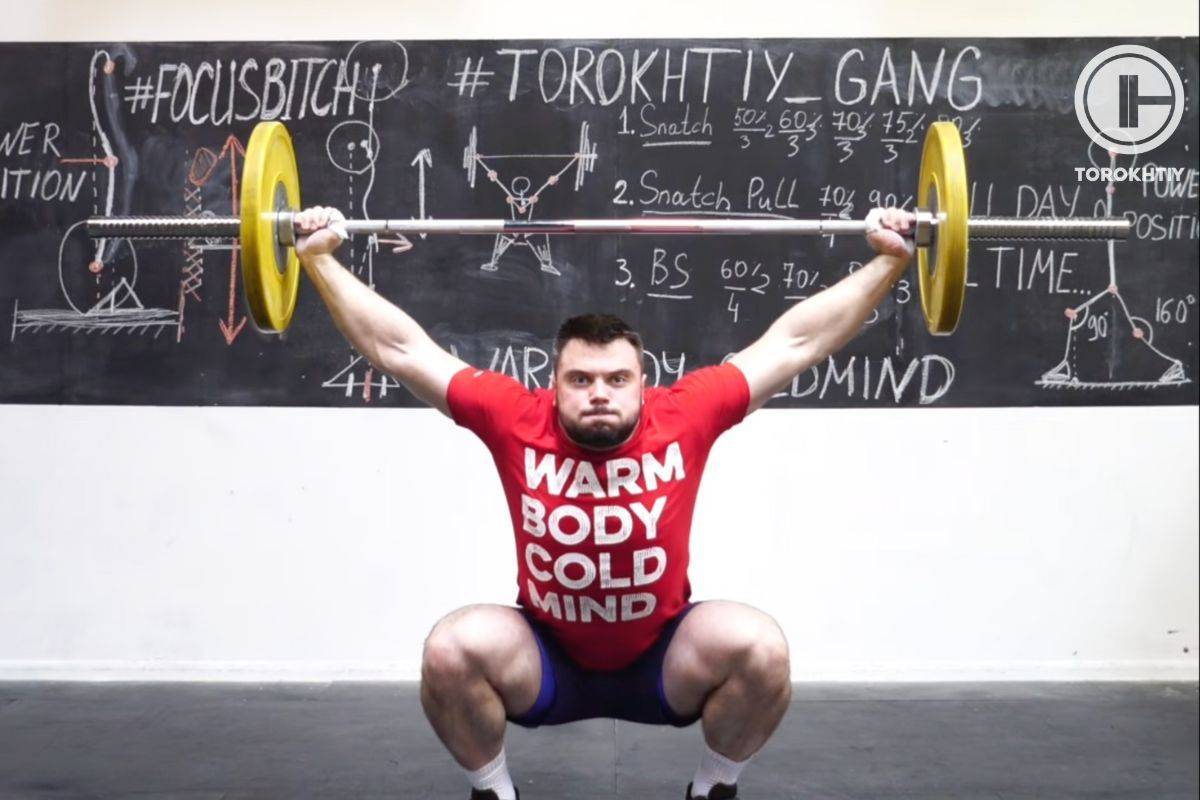
As a rule of thumb what you can power snatch, you can snatch. However, most likely you can’t power snatch as much as you can snatch.
For the muscle snatch and power snatch variations, the difficulty can often be to focus on the specific technique elements involved. However, the power snatch is more technically demanding than the muscle snatch.
Muscle Snatch is the only one that does not always allow you to catch the bar fully overhead and you need to press it up and lock your elbows. That part can be difficult if you’re currently working on shoulder strength.
Generally when we look at the learning curve – Muscle Snatch is the easiest to learn, then Power Snatch and last one is most demanding in terms of mobility and technique – Snatch.
3. Purpose And Application
Each of the snatch variations above is important for improving performance in the main snatch Olympic lift for Olympic weightlifters, and all exercises can be valuable tools on their own for performance improvements in different sports, like NFL, combat sports and more.
While the normal snatch practices the exact movement patterns, the muscle snatch and power snatch focus on certain elements of the Snatch like 1st and 2nd pull.
The normal snatch is the competition lift. It allows you to practice the technique elements together just like you would in a competition.
The muscle snatch is ideal for learning and reinforcing proper upper-body mechanics during the turnover of the snatch – elbows. At lighter weights, it helps to develop technique. At heavier weights, it can still work on power or specific strengths but also can simply strengthen your shoulders.
The power snatch focuses on training power, speed, and aggression in both the first and second pulls and in the turnover phase. It limits the time to get under the bar, improving efficiency and teaching lifters to get under the bar fast in the turnover.
It’s also useful for lighter training days, beginners, and those with limited mobility for full snatches.
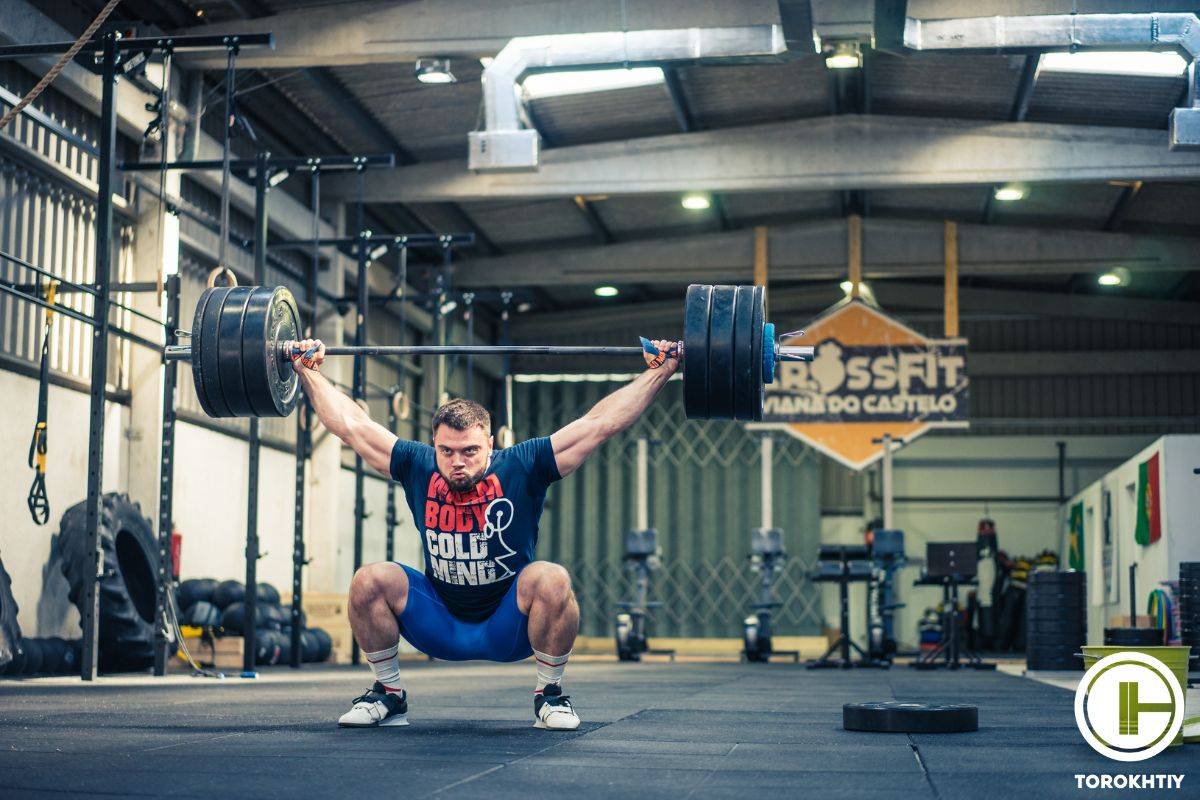
Muscle Snatch vs Power Snatch vs Snatch – Summary
The table below summarizes the main differences we’ve discussed above. Use it to work out which snatch variation is best for your current programming and workout goals.
Which Snatch Variation Should You Perform?
Each of the snatch variations discussed above should be used as part of a well-organized lifting program.
Use the normal snatch to mimic competitive lifting. The muscle and power snatch variations can be used to work on certain technique elements to improve performance or simply are great tools to improve performance like power and speed, in different sports.
Which snatch variation do you commonly use and why? What technique elements do you struggle with? Let us know in the comments below!
References:
- Joaquim Paulo Antunes, Rafael Oliveira, Victor Machado Reis, Felix Romero, Joao Noutaom Joao Paulo Brito, “Comparison Between Olympic Weightlifting Lifts And Derivatives For External Load And Fatigue Monitoring,” Healthcare 10, no. 12 (2022):2499.
- Andrzej Mastalerz, Paulina Szyszka, Weronika Grantham, Jerzy Sadowski, “Biomechanical Analysis Of Successful And Unsuccessful Snatch Lifts In Elite Female Weightlifters,” Journal Of Human Kinetics 68 (2019):69-79.
- Moh Nanang Himawan Kusuma, Muhamad Syafei, “Biomechanical Analysis Of Snatch Technique In Conjunction To Kinematic Motion Of Olympic Weightlifters”, Advanced In Health Science Research 12 (2018).
- Cheng Loong Ang, Pui Wah Kong, “Field-based Biomechanical Assessment Of The Snatch in Olympic Weightlifting Using Wearable In-Shoe Sensors And Videos – A Preliminary Report”, Sensors 23, no.3 (2023):1171.
- https://journals.lww.com/nsca-scj/abstract/2007/06000/application_of_the_power_snatch_for_athletic.1.aspx Application of the Power Snatch for Athletic Conditioning
- Photos by Torokhtiy Media Team.
Why Trust Us?
The product testing process is described in more detail here.
Experience: 21 years
Best Results: Snatch – 200 kg,
C&J - 240 kg
My name is Oleksiy Torokhtiy. I am a professional athlete with 20 years of experience in Olympic weightlifting. I have won multiple European, and World titles and have taken part in two Olympic Games (Beijing 2008, London 2012).
After finishing my career, I have committed myself to coach, and as of 2022, I’ve hosted 200+ weightlifting seminars all over the globe. I’m the founder of an international sportswear and accessories brand, Warm Body Cold Mind (my motto), author, and creator of a series of training programs and eBooks.
If you have any questions/suggestions/any other inquiry, you can reach out to us via email - reviews@torokhtiy.com

